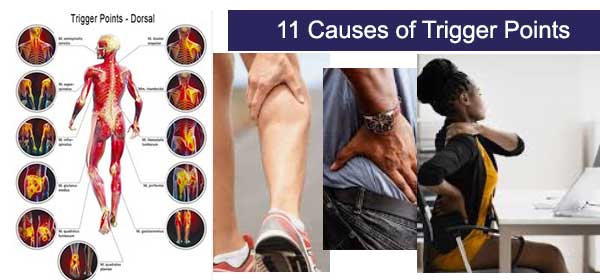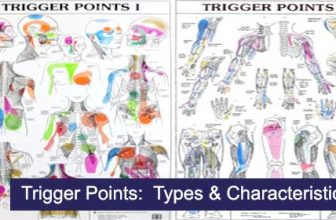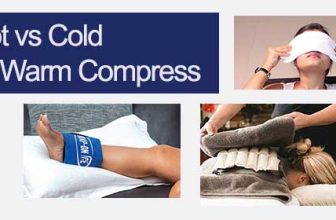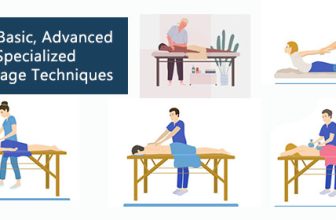
Trigger Point Causes
Trigger points, also known as myofascial trigger points, are hyperirritable spots in skeletal muscle that can cause pain, tightness, and reduced muscle function. Understanding the causes of trigger points is essential for effective treatment and prevention. Here are some of the primary factors that contribute to the development of trigger points:
1. Muscle Overuse:
Repetitive motions, poor posture, and activities that strain specific muscles can all lead to trigger points. Engaging in repetitive activities or movements can overwork certain muscles, leading to the formation of trigger points.
For example, playing tennis without adequate rest can lead to trigger points in the extensors of the wrist (e.g., extensor carpi radialis), often resulting in a condition known as “tennis elbow.”
2. Dehydration:
Dehydration can contribute to the formation of trigger points by causing an imbalance of electrolytes, reducing blood flow, and impairing lymphatic circulation. This leads to the accumulation of metabolic wastes, such as lactic acid, in muscle tissues. The buildup of these wastes irritates muscle fibers, creating local ischemia and promoting the formation of taut bands and nodules characteristic of trigger points.
For example, inadequate fluid intake can result in muscle cramps and trigger points in the hamstrings after exercise.
3. Emotional Stress/ Anxiety:
Psychological stress can lead to increased muscle tension and the development of trigger points. Chronic stress often causes people to unconsciously tighten their muscles, particularly in the neck, shoulders, and back.
For example, chronic stress and anxiety causing sustained muscle tension, leads to trigger points in the neck and shoulder muscles, particularly the upper trapezius and sternocleidomastoid.
4. Lack of Physical Activity:
Prolonged inactivity or a sedentary lifestyle can lead to muscle weakness, stiffness, and the formation of trigger points due to reduced muscle use and conditioning.
For example, having a sedentary lifestyle, sitting for extended periods, can lead to trigger points in the gluteal muscles, back muscles, and hip flexors due to muscle weakness and stiffness.
5. Lack of Sleep:
Lack of sleep can cause trigger points due to its impact on muscle recovery, stress levels, and overall physiological function. During sleep, the body undergoes crucial repair processes, including the restoration of muscle tissue and the regulation of stress hormones like cortisol. Insufficient sleep disrupts these processes, leading to increased muscle tension, fatigue, and reduced ability to repair microtears in muscle fibers, making them more susceptible to developing trigger points.
Moreover, poor sleep quality exacerbates stress, which further tightens muscles and impairs circulation, contributing to the formation and persistence of trigger points. Adequate sleep is essential for muscle health, recovery, and the prevention of trigger points.
6. Medical Conditions:
- Chronic Conditions like fibromyalgia, chronic fatigue syndrome, and other musculoskeletal disorders are often associated with the presence of trigger points. For example, individuals with fibromyalgia often develop multiple trigger points in various muscles, such as the arms, legs, and back.
- Systemic infections or inflammatory conditions can predispose muscles to the formation of trigger points. For example, rheumatoid arthritis, which is a systemic inflammatory condition can lead to trigger points in the muscles around affected joints.
7. Metabolic Factors:
Poor circulation or conditions that impair blood flow to muscles can result in ischemia (reduced blood supply), contributing to the formation of trigger points. For example, poor circulation due to peripheral artery disease can lead to trigger points in the lower leg muscles.
A lack of adequate oxygen supply (hypoxia) to muscle tissues can cause metabolic stress and trigger point development. For example, reduced oxygen supply to the muscles during intense workouts without proper breathing techniques can cause trigger points in the pectoral muscles.
8. Muscle Trauma:
Injuries like strains, sprains, and whiplash can damage muscle fibers and contribute to trigger point formation. Direct trauma to a muscle, such as from a fall, collision, or sudden strain, can lead to the development of trigger points. For example, a direct blow to the thigh can cause trigger points in the quadriceps muscle.
Repeated minor injuries or microtraumas from poor posture, improper lifting techniques, or ergonomic issues can cumulatively result in trigger points. For example, poor posture at a desk job can lead to microtrauma in the muscles of the neck and upper back, resulting in trigger points in the trapezius or levator scapulae.
9. Neuromuscular Dysfunction:
Irritation or compression of nerves can lead to abnormal muscle activity and trigger points. For example, sciatic nerve irritation can cause trigger points in the piriformis muscle, leading to a condition known as “piriformis syndrome.”
Abnormal functioning at the motor endplate, where nerves connect with muscle fibers, can lead to the sustained contraction of muscle fibers, forming trigger points. For example, abnormalities at the motor endplate in the upper trapezius can result in sustained muscle contraction and trigger point formation.
10. Nutritional Factors:
Deficiencies in certain vitamins and minerals, such as magnesium and calcium, may play a role in trigger point development. For example, deficiency in magnesium can lead to muscle cramps and trigger points in the calves (gastrocnemius and soleus) while running.
11. Poor Posture:
- Static Postures: Maintaining poor or static postures for extended periods, such as slouching at a desk or holding an awkward position, can create muscle imbalances and stress, leading to trigger points. For example, sitting with poor posture for prolonged periods can lead to trigger points in the lower back muscles (e.g., erector spinae).
- Imbalanced Load: Carrying heavy bags on one shoulder or consistently favoring one side of the body can cause uneven muscle stress and trigger points. For example, consistently carrying a heavy bag on one shoulder can create trigger points in the upper trapezius and rhomboid muscles on that side.
How to Prevent Trigger Points
- Engage in regular physical activity to keep muscles conditioned and flexible. Incorporate stretching and strengthening exercises to balance muscle use.
- Ensure proper workstation setup to maintain good posture. Use ergonomic equipment and techniques to reduce strain on muscles.
- Practice relaxation techniques, such as deep breathing, meditation, or yoga, to manage stress and reduce muscle tension.
- Maintain a balanced diet rich in essential nutrients and stay well-hydrated.
- Allow sufficient rest and recovery time between strenuous activities to prevent muscle overuse and strain.
- Learn about proper body mechanics and movement patterns to avoid repetitive strain and muscle imbalances.



